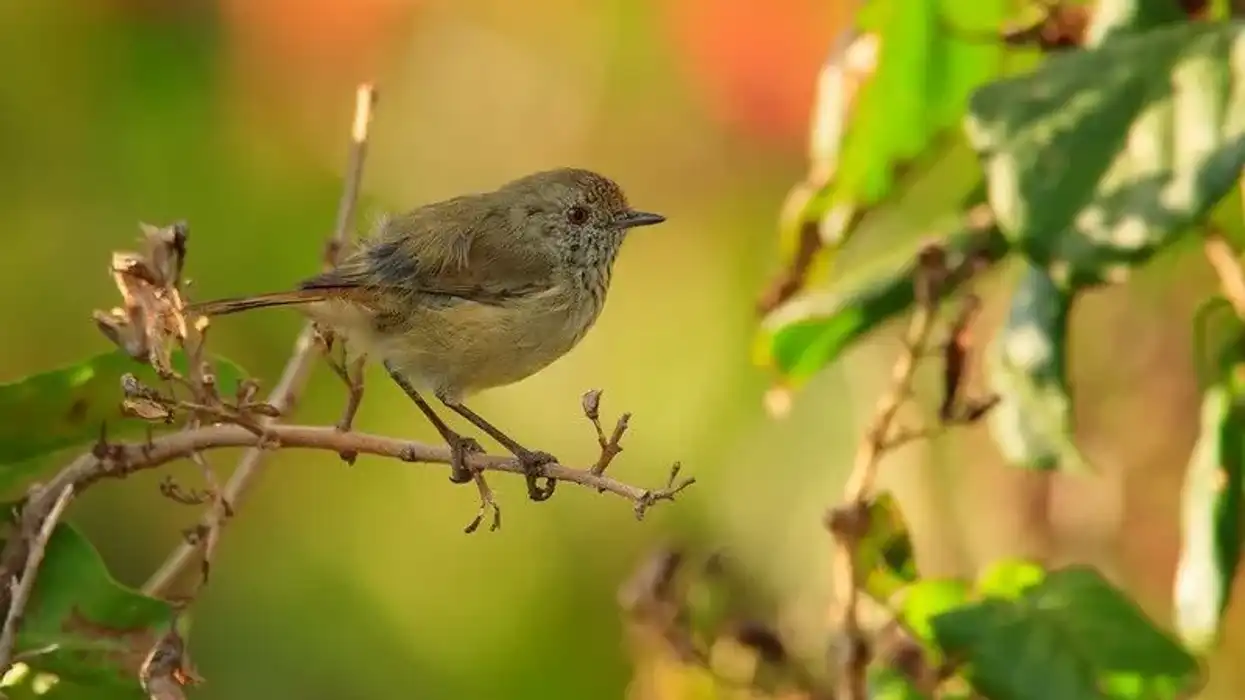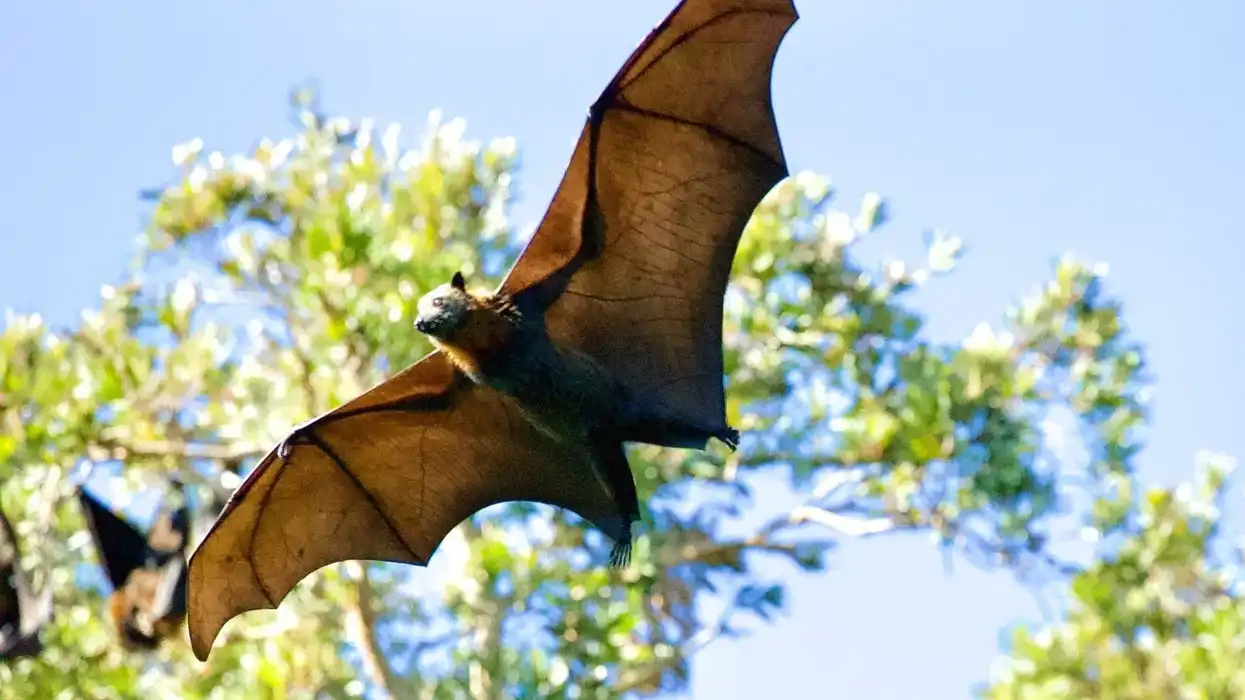Northern waterthrushes are large warblers that are native to the North American regions with a migration route that takes them into the South American regions as far south as eastern Colombia and northern Ecuador! They nest, breed, and live in the North American regions in the summer and take off to Southern America to spend their winters.
Northern waterthrushes prefer to live in wet habitats with their breeding grounds occurring in mostly wooded swamps and bogs. In the winter after completing their migration, they are found in mangroves.
These birds are solitary and hold territories in areas of migration and will let others know of their presence with loud chink calls. They forage along the ground and water edge feeding off of insects, fish, and other crustaceans in the shallow waters.
A loss of mangroves and other wetlands might cause concern for these birds, but as of now, they are safe.
If you liked these facts about the northern waterthrush, then you'll surely like these facts about song thrushes and jacanas too.
Northern Waterthrush Interesting Facts
What type of animal is a Northern Waterthrush?
A northern waterthrush (Parkesia noveboracensis) is a North American bird species. They are large, perching birds (Warbler) that are ground walking and migratory.
What class of animal does a Northern Waterthrush belong to?
Northern waterthrushes are a species of birds of North America, belonging to the class Aves of the Animalia Kingdom.
How many Northern Waterthrushes are there in the world?
The northern waterthrush (Parkesia noveboracensis) has a wide range of habitats helping them thrive in their wildlife range. These birds are estimated to have a high population of around 17 million strong!
Where does a Northern Waterthrush live?
These birds are found in forests and rainforests in their terrestrial habitats and along streams and rivers, mostly near the water's edge in their aquatic habitats. They remain mostly in North America for breeding and nesting but follow a migration pattern that leads them to South America as their wintering grounds.
What is a Northern Waterthrush's habitat?
The breeding grounds for the northern waterthrush are usually cold and dark forested wetlands along the river or pond edges in the summer season. When they migrate in the winter season, these warblers inhabit thick cover along streams and mangrove swamps, bogs, stagnant pools, and wooded habitats.
Who do Northern Waterthrushes live with?
The northern waterthrush (Seiurus noveboracensis) is usually solitary and comes together only during the breeding seasons. Males sing to catch the attention of females to mate.
How long does a Northern Waterthrush live?
The northern waterthrush has an average lifespan of about eight years.
The oldest one on record was eight years and 11 months old and was re-captured during a banding operation in 1987 in Michigan.
How do they reproduce?
The males of these songbird species sing to attract females during the mating season, this specific behavior is how pairs bond. Males will vibrate their wings and sing with their crown feathers raised, and the interested female will answer with a chink.
When they form pairs, the male will choose the general nesting site but the final call of choosing an actual nest site is on the female. Nests are usually made in wind-blown trees in wooded swamps, bogs, or banks of rivers.
The interior of the nest is constructed with pine needles or twigs and lined with the hair of rabbits or cows.
After copulation, the female will lay a clutch of up to six eggs, with an incubation period of 12 days with both parents partaking in feeding responsibilities for the fledglings.
What is their conservation status?
Currently, the IUCN Red List has listed these North American birds are listed as a species of Least Concern as their population range in their wildlife habitat is high and estimated to be in the millions.
They do however face health issues due to human interferences like deforestation which causes habitat loss and falling prey to illness due to eating infected prey like insects that take in a large amount of unhealthy insecticide.
Northern Waterthrush Fun Facts
What do Northern Waterthrushes look like?

The northern waterthrush is a large warbler with a flattish head and a long, heavy bill. They are dark brown with a white or yellowish underbelly that is streaked. They have a distinctive dark eye-line with an olive-colored triangular spot at the front of their eyes. Their wings and tails resemble a solid dark-brown color when seen from above.
How cute are they?
These birds are extremely cute thanks to their amazing vocal cords that produce a sweet singing voice and they are a joy to watch as they hop around foraging on the ground.
How do they communicate?
Northern waterthrushes are loud birds and are very vocal, they communicate through a song that is loud ringing when they want to attract mates. They also communicate via chirps among other vocal methods.
How big is a Northern Waterthrush?
The northern waterthrush is a large, ground-walking bird and is usually 4.7-5.9 in (12-15 cm) long, with a wingspan of 8.2-9.4 in (21-24 cm).
How fast can a Northern Waterthrush run?
Due to a lack of data, the speed at which these birds run is hard to pinpoint. It is however known that these birds are high fliers and can fly up to 1.2 miles (2 km).
How much does a Northern Waterthrush weigh?
These birds are lightweight and an adult northern waterthrush weighs around 0.5 oz (16 g).
What are the male and female names of the species?
There is no specific name for the male and female waterthrush birds.
What would you call a baby Northern Waterthrush?
Baby northern waterthrush, like most baby birds, is known as a chick.
A female waterthrush will lay her eggs in a nest and the parents will care for the chicken until they are four or five weeks old when they start feeding themselves.
What do they eat?
Northern waterthrushes mainly forage on the ground and in shallow water and eat insects, snails, crustaceans, fish, clams, and salamanders.
Are they poisonous?
No, they are not poisonous and are usually docile birds going on about their days with their usual foraging behavior and creating the perfect nest to lay eggs in.
Would they make a good pet?
There have been no records of a Northern Waterthrush as a pet so it is difficult to say if they would make a good pet or not.
To keep them at a stable population status and under proper conservation, it is recommended not to capture these birds as being separated from their natural range of habitat might cause concern to them and make them act unnaturally.
Did you know...
The northern waterthrush is a territorial bird in both their summer and wintering range of nesting habitats. Males will proclaim their territory with a loud song. This song is an indication for the other male birds to not trespass.
Their habitat is changeable with their migration habits with them opting to go to the south as a wintering range and choosing wooded bogs and swamps to build their nest.
Thanks to banding efforts, it is known that they have a life span of up to seven years in the wild.
Warblers like the northern waterthrush have many collective nouns to address them, they are called a 'wrench', 'confusion', 'bouquet', and a 'fall'.
Northern waterthrush vs Louisiana waterthrush
The northern waterthrush and Louisiana waterthrush are similar species due to which they often get mixed up with one another by the inexperienced eyes of novice birdwatchers.
There are, however, features that can help differentiate them from each other, like how the Louisiana waterthrush has a broad white eyebrow and a plain white throat with bright pink legs compared to the northern waterthrush's black legs and buffered underpart.
Northern waterthrush range
These North American birds spend a large part of their lifespan in migration as they are migratory birds.
They forage, breed, and create nesting grounds in North American regions and fly to regions of Central and South America and the West Indies in search of wintering grounds where they spend their entire winters flying back to their native North America.
Here at Kidadl, we have carefully created lots of interesting family-friendly animal facts for everyone to discover! Learn more about some other birds including kestrel facts and golden pheasant facts.
You can even occupy yourself at home by coloring in one of our free printable Louisiana Waterthrush coloring pages.










